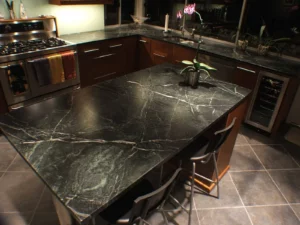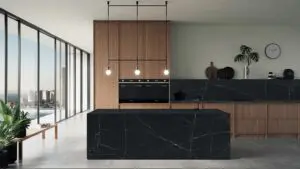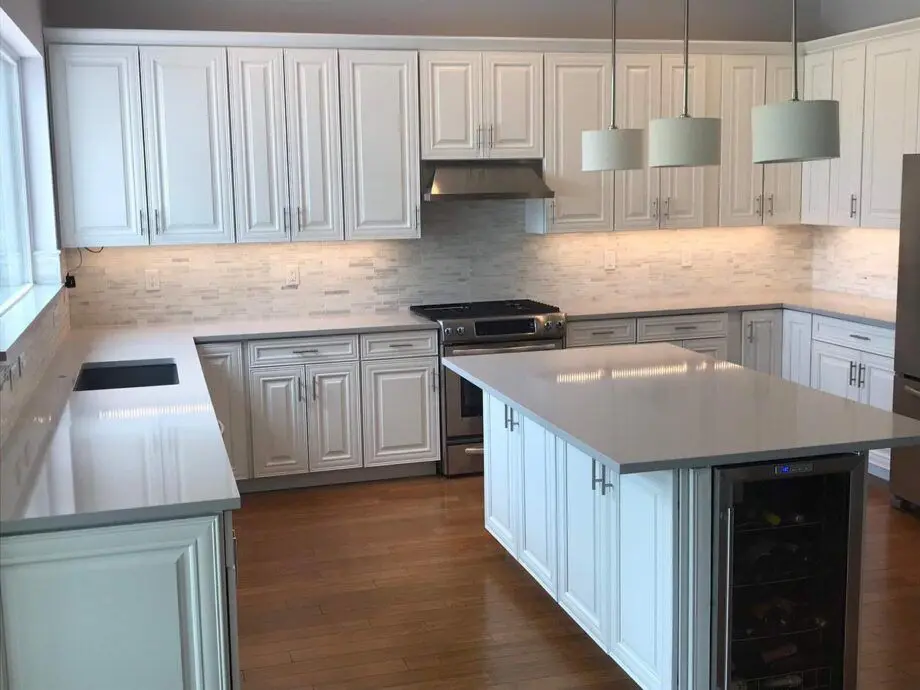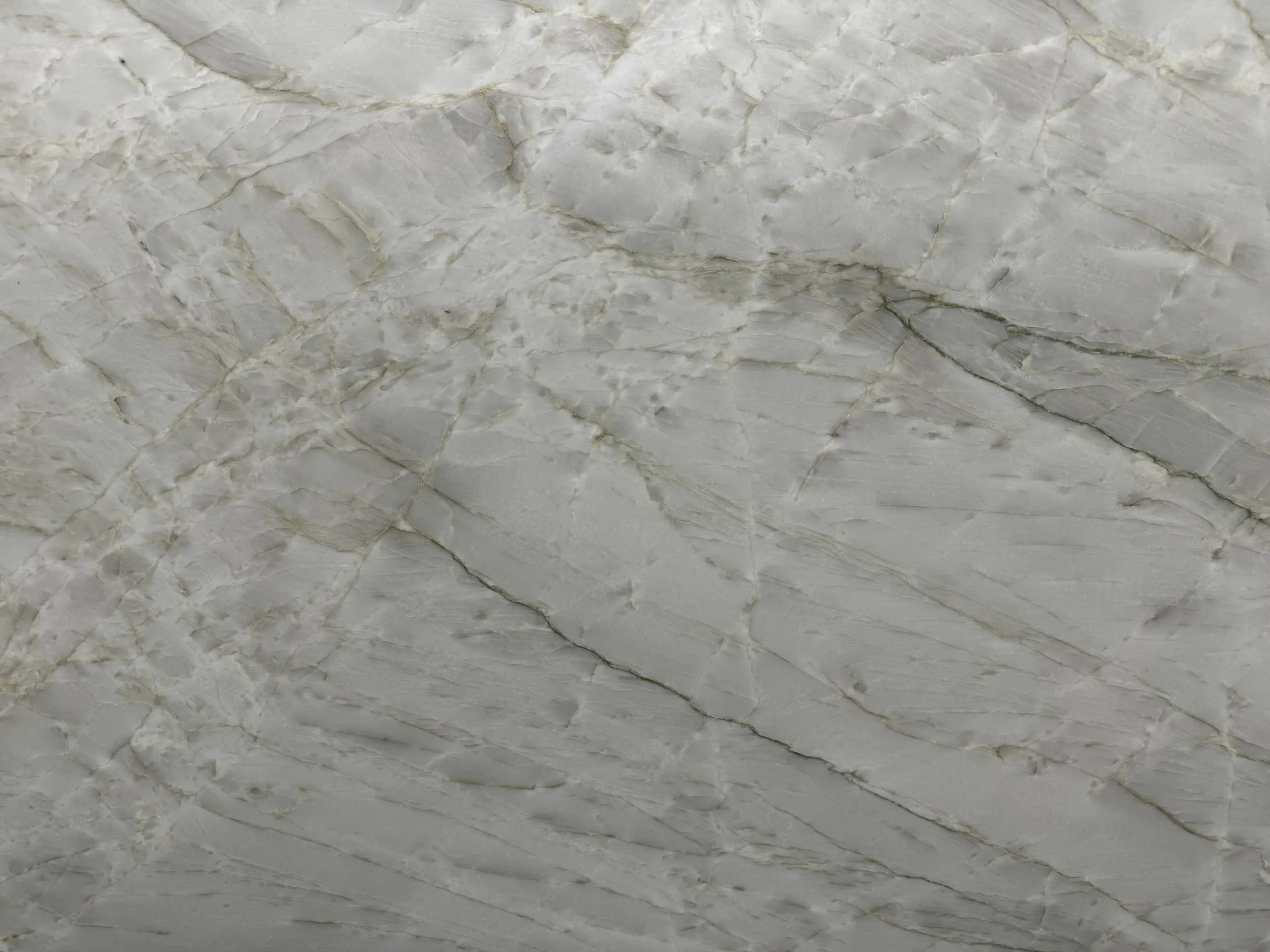A Brief Overview of Soapstone Countertops
As the trend for naturally-inspired, earthy interiors continues to rise, soapstone countertops are finding their way into the heart of many homes – the kitchen. The blend of durability, natural beauty, and tactile comfort that soapstone offers makes it a top choice among homeowners and designers alike. Yet, as soapstone takes center stage, certain myths have begun to cloud its reputation. It’s time to clear the air and unveil the truth behind the Top 5 Myths about Kitchen Soapstone Countertops.
[ez-toc]

This article may interest you. COUNTERTOP MATERIALS: PROS AND CONS
Top 5 Myths about Kitchen Soapstone Countertops
Myth 1: Soapstone is Easily Damaged
One of the common myths that often make homeowners think twice about soapstone countertops is that they’re easily damaged. The truth, however, is far from this assumption. Soapstone, being a siliceous stone, is incredibly durable and resistant to the common kitchen hazards like spills and heat. Yes, soapstone is softer than granite or quartz and might scratch more easily, but these scratches can be easily buffed out with fine sandpaper, or many homeowners embrace them as part of the counter’s evolving patina.
Myth 2: Soapstone is Prohibitively Expensive
When it comes to the cost of soapstone, many homeowners get sticker shock without considering the bigger picture. Although the initial investment for soapstone may be higher than some other countertop options, its durability, longevity, and low maintenance make it a cost-effective choice in the long run. Moreover, the aesthetic value it adds to your kitchen is immeasurable.
Myth 3: Soapstone is High Maintenance
Soapstone is often unfairly labeled as high-maintenance. On the contrary, soapstone is one of the least demanding materials you can choose for your countertops. It’s non-porous, meaning it doesn’t require any sealing. Over time, soapstone develops a natural patina, adding character and depth to its appearance. Those who prefer to maintain the stone’s initial color can simply apply mineral oil periodically.
Myth 4: Limited Design and Color Choices
Some people assume that soapstone offers limited design possibilities due to its lack of color variety. While it’s true that soapstone does not offer a rainbow of colors like some materials, its unique aesthetic—typically gray, bluish, or greenish with distinctive veining—creates a one-of-a-kind, sophisticated look that complements a wide range of kitchen styles, from traditional to modern.
Myth 5: Soapstone Harbors Bacteria
Owing to its non-porous nature, soapstone is a poor host for bacteria and mold, making this myth a complete falsehood. This quality, along with its natural resistance to stains, makes soapstone a hygienic choice for kitchen countertops.
The Undeniable Advantages of Soapstone Countertops
Beyond busting the myths surrounding soapstone, it’s worth exploring its remarkable benefits. From heat resistance and durability to the unique charm it adds to your kitchen, there’s a lot to love about soapstone.

Caring for Your Soapstone Countertops: An Essential Guide
Caring for soapstone countertops is a straightforward process, adding to their appeal as a practical kitchen solution.
Daily Cleaning: A simple daily wipe-down with a soft cloth and mild soap is typically all that’s needed. Since soapstone is non-porous, you don’t have to worry about water seeping in and causing damage. For stubborn messes, a non-abrasive scrubber can be used.
Deep Cleaning: Deep cleaning can be carried out as needed. While harsh chemical cleaners are unnecessary (and discouraged), a baking soda and water paste can serve as a gentle, natural scrub for more stubborn stains.
Scratch Repair: If your soapstone surface gets scratched, don’t panic. A quick sanding with fine-grit sandpaper can buff out most scratches. For deeper marks, start with a coarser sandpaper and gradually work your way to a finer grit, finishing with a touch of mineral oil to restore the luster.
Maintaining the Finish: Some homeowners choose to periodically oil their soapstone countertops to enhance the natural darkening that occurs over time. This is purely aesthetic and doesn’t affect the countertop’s durability or functionality.
Soapstone vs Other Popular Countertop Materials
Soapstone vs Granite: Granite is harder than soapstone and offers more color variety. However, it needs to be sealed to avoid staining and can chip or crack if struck with hard objects. Soapstone is non-porous, doesn’t require sealing, and has better thermal properties.
Soapstone vs Marble: Marble gives an undeniably luxurious aesthetic but is prone to staining and scratching. In contrast, soapstone is denser, making it more resistant to damage, and its non-porous nature eliminates the concern of staining.
Soapstone vs Quartz: Quartz is engineered stone, offering a wide array of colors and patterns. It’s scratch and stain-resistant but can be damaged by excessive heat. Soapstone, being a natural heat-resistant stone, can handle hot pans without damage.
Soapstone vs Laminate: Laminate is a budget-friendly countertop option with a vast array of design choices. However, it doesn’t have the heat, scratch, or stain resistance of soapstone, and damage to laminate is typically irreversible.
Buying and Installing Your Soapstone Countertops
Choosing soapstone for your countertop is a great decision, and buying and installing them is a process that should be well planned to ensure a satisfying outcome.
Selecting Your Soapstone: When selecting your soapstone, consider the color and veining pattern that best suits your kitchen’s aesthetic. Slabs can vary, so it’s a good idea to pick your slabs personally.
Hiring a Professional: While some homeowners may opt for a DIY installation, hiring a professional is advisable for the best results. A skilled installer can make precise cuts and adjustments, ensuring the countertop fits perfectly within your kitchen layout.
Cost Consideration: The cost of soapstone countertops can vary depending on the thickness, color, and finish of the material you choose. Be sure to factor installation costs into your budget.
Installation Process: The process includes measuring your counter space, selecting and purchasing your stone, having the stone cut to fit your specific dimensions, and having the cut pieces installed. Remember, soapstone is heavy, so additional supports may be necessary.
Post-Installation: Once installed, the countertop should be cleaned and, if desired, oiled to achieve your preferred finish. From then on, minimal maintenance is required to keep your soapstone countertop looking its best.

Frequently Asked Questions (FAQs)
- How long will my soapstone countertop last? With proper care and maintenance, soapstone countertops can last a lifetime. The material is incredibly durable, resistant to heat, and doesn’t readily stain or harbor bacteria, all of which contributes to its longevity.
- What cleaning agents are safe for soapstone countertops? Given its non-porous nature, soapstone can be easily cleaned with mild soap and water. Avoid using harsh chemicals or abrasive cleaning pads as they may scratch the surface.
- Can soapstone countertops handle hot pots and pans? One of the remarkable qualities of soapstone is its ability to withstand heat. You can place hot pots and pans directly on the countertop without worrying about damage or discoloration.
- Is it safe to cut directly on a soapstone countertop? Technically, you can cut directly on a soapstone countertop as it’s scratch-resistant to some extent. However, to maintain the pristine look of the countertop, it’s advisable to use a cutting board.
- Are soapstone countertops eco-friendly? Yes, soapstone countertops are eco-friendly. Soapstone is a natural material that doesn’t emit harmful gases or require harmful chemicals for its maintenance. Also, if you ever choose to replace your soapstone countertop, it can be completely recycled.
- What should I do if my soapstone countertop gets scratched? If your soapstone countertop gets scratched, don’t worry. Minor scratches can be buffed out using fine sandpaper, and deeper ones can be treated with a bit of mineral oil or sanding before oiling. It’s one of the appealing aspects of soapstone – it’s quite forgiving and easy to restore to its original glory.
Conclusion: The Reality Behind the Myths
When it comes to designing a kitchen that’s both aesthetically pleasing and functional, soapstone countertops emerge as a compelling choice. As we’ve demonstrated, the myths about soapstone are simply misconceptions that obscure its true value. With its blend of practicality, durability, and timeless charm, soapstone might just be the perfect choice for your kitchen.


